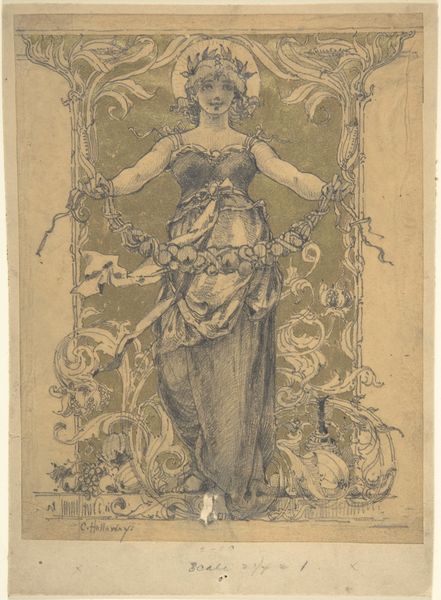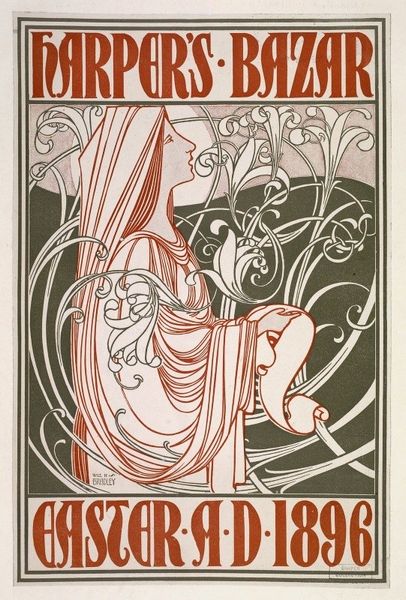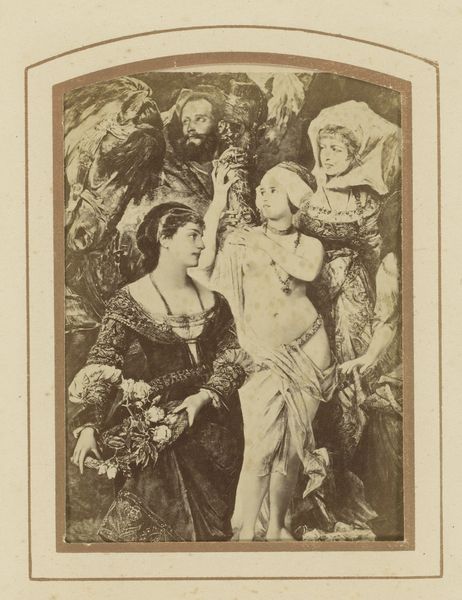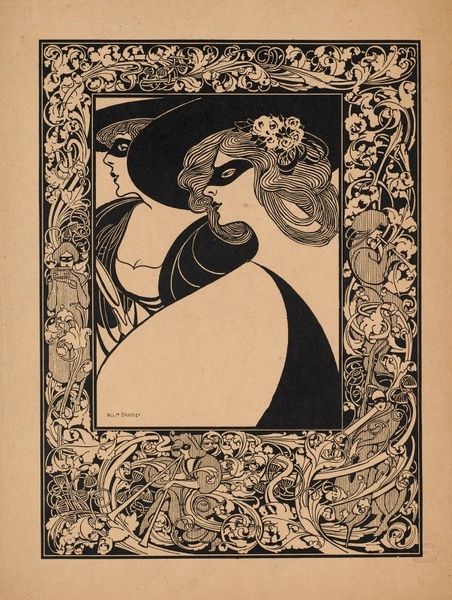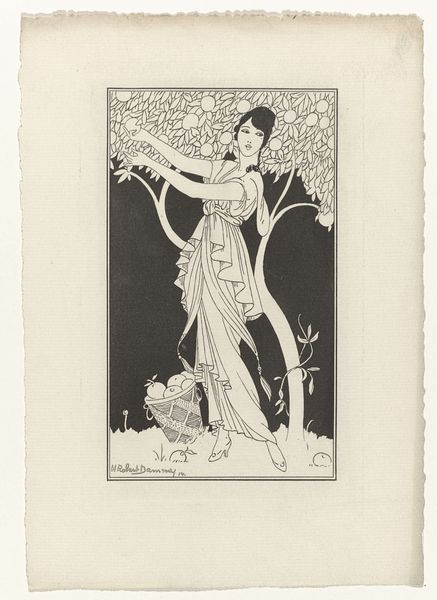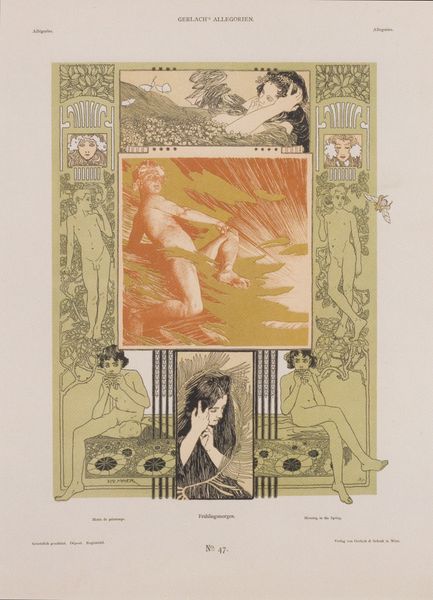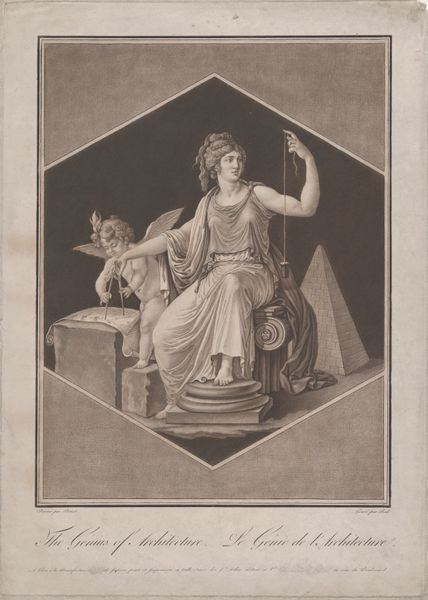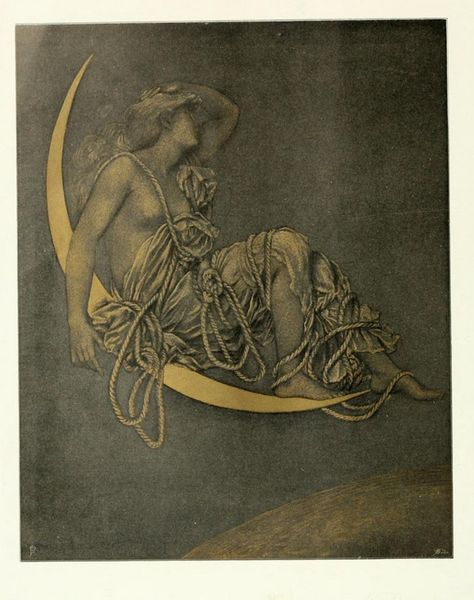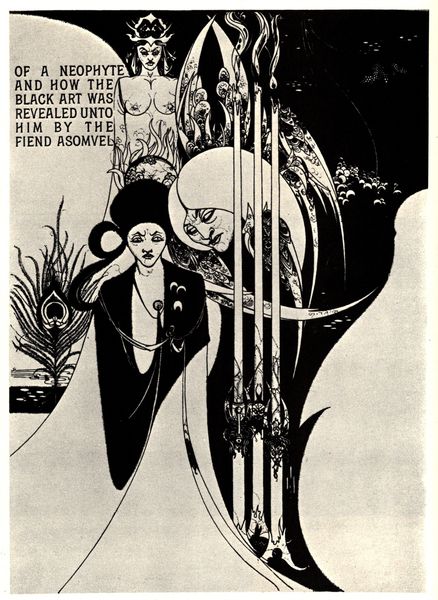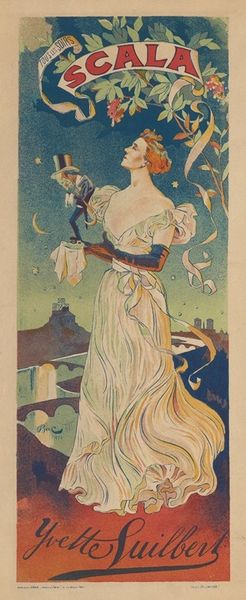
graphic-art, lithograph, print, poster
#
portrait
#
graphic-art
#
art-nouveau
#
lithograph
# print
#
figuration
#
line
#
pen work
#
poster
Copyright: Public Domain: Artvee
Curator: Alphonse Mucha, a towering figure of Art Nouveau, created this lithographic poster, titled “Máj”, in 1902. Editor: It has this overwhelming air of springtime melancholy! Like a Botticelli painting, only filtered through longing... I see soft lines and a sort of wistful pose from the child that pulls you right in. It's subtle but persistent. Curator: Exactly! The title "Máj," which means "May" in Czech, refers to a celebrated romantic poem. Mucha created it as an announcement for a Czech periodical. The figure’s embrace, tender, the cascading lines forming flowers and foliage, all speaks to a broader theme of national identity that was at play within Bohemia at the turn of the century. Editor: Ah, so there's that duality! A coming of age sort of theme. On the one hand there’s spring’s potential—new life, fresh growth. On the other, that poem probably dealt with heavy, existential matters that really fit the zeitgeist. The girl's eyes especially sell that sentiment; I get it now. It feels both personal and monumental. Curator: Indeed. The Art Nouveau movement thrived partly as an alternative visual language which at times encoded nationalist sentiments. The focus on a lyrical visual experience certainly aided in a Czech cultural and national reawakening. Editor: And he does it using almost exclusively lines, too! You've got this whole composition unfolding using different thicknesses and curvatures in an earthy almost monochromatic palette—red ochre perhaps— that makes it feel intimate. Almost as if we are catching something we shouldn't. Curator: His choice of such a naturalistic color is crucial to highlight the romantic connection that Mucha had with his homeland, it is so delicate that could have easily been ruined. It has a lot to say about the role of natural elements and design within national identity construction. Editor: I must admit, I initially reacted to the visual and completely overlooked the history embedded in the image. I see this almost saccharine scene now imbued with a sense of purpose—it's pretty impressive how context changes perception. Curator: Absolutely. Studying this poster tells us so much about Alphonse Mucha’s broader project—integrating art with daily life to awaken dormant national spirits, while using the movement that helped create it. Editor: You know what? I am glad my spontaneous impressions didn’t do it justice; there is nothing like peeling layers in art to reveal depth in human affairs.
Comments
No comments
Be the first to comment and join the conversation on the ultimate creative platform.

